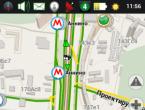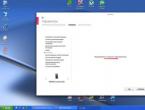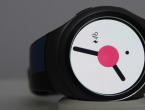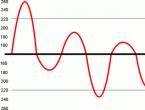Top right corner of the page. How to make pagination in word
Today we will partially consider the Yandex search engine.
Its main page is the face of the entire system and literally a portal to the wonderful world of a search engine that occupies a leading position in Runet.
There is no point in talking about the reasons for leadership now, because the topic of our article is somewhat different, but, if in a couple of words, then Yandex:
- Helps the user
- Friendly even for beginners
- Easy to use
- Uses a unique ranking system
- It has its own way of development and tries to bring something new.
The system was launched back in the distant ninety-seventh year during a presentation at the Softool exhibition.
And already at that time, Yandex coped with the morphology of the Russian language without any problems, looking for the information the user needed, taking into account the distance.
It also had its own algorithm for the relevance of a particular page of each site that was indexed.
First acquaintance with the main page
In order to get to the main page of Yandex, it is enough to enter www Yandex or www Yandex ru or ru in the search bar of the browser.
Well, if you are generally too lazy or you are full of impatience to enjoy a hitherto unseen spectacle - just write "Yandex" and click on the first link that appears in the search.
So, we are on the main page. It must be said that since its appearance in this search engine the main page changed very often.
And all because the developers carefully monitor the current trends and desires of users.
Based on all this, as a constructor, a page is assembled that maximally corresponds to what we used to call the word “convenience” or “comfort”.
When you get to the page for the first time, the first thing you do is turn to the very top, where a bar pops up offering to download an adapted browser Yandex.Browser, equipped with special protection technology.
Advice! Despite the fact that Yandex.Browser is well developed and "sharpened" for all the desires of a simple user, someone will not want to download it, and the top bar will distract from important information. In this case, you can pay attention to the upper right corner of the page, where there is a "Close" button, made in the form of a cross. Click on it, and you will no longer see an annoying bar suggesting you to perform an action you do not need.
Of course, after a while it may appear again, but you will already know exactly what to do with it.
Well, or she will convince you and you still decide to download Yandex.Browser, at least for fun.
At the end of the review, by the way, we will provide you with a video with detailed setting this browser.
Make Yandex the main page in the browser
You may have a question: “How can I make sure that the Yandex home page is always in my browser and I don’t have to constantly look for it?”.
You can do it absolutely free!
Caring developers have taken care of this, so if you look at the very top left corner of the page, you can find the "Make Home" link.
Click, you will be prompted to install a special extension and you're done - the start page!

Advice! Pay attention to the picture above. The first arrow (on the left) indicates the main link that allows you to make Yandex start page any browser. However, if you are using a browser Google Chrome, you may see a handy ad (arrow on the left) that will help you install a special extension that will make Yandex the main search engine in your browser as quickly as possible. After that, every time you want to surf the Internet, your favorite Yandex main page will automatically load.
Specify your location if Yandex has not determined
After a little manipulation of the browser, we return to the page and see that the city in which you are currently located is indicated in the same upper left corner.
The system automatically determines it and gives you information that is most relevant to the place where you are now.
But it may also happen that Yandex makes a mistake and gives you the wrong city.

So, if you are still interested in the Yandex search engine, we will continue. We are transferred to the upper right corner of the page and we see several links there.
They allow:
- on which the page will be

- by customizing it

- Start mailif you don't have one (there is a button "")

- Log in using the "Login" button after registration or using a profile in one of the social networks

Advice! Registration in Yandex is fast and convenient. We advise you to use it, because it will allow you to use additional features system, as well as save any changes that you have made in the settings.
News in Yandex
Having dealt with the top of the page, we move closer to the middle. Before your eyes, as you will notice, a column will appear " News».
Initially, news that is relevant to the country in which you are located is shown there.
If your country is Russia, all the news that happened today will be shown. If in Ukraine, the relevant content will be shown.
However, if you are more interested in news related to the area in which you live, just click on the link next to the "News" link, which is named after your area.
In our case, this is the "Dnepropetrovsk region".
And to the right of the news, advertising banners from Yandex are constantly being broadcast, which either help in some small things, or talk about some new products of the company and its partners.



- More detailed news






Yandex search bar
In the center of the main page of Yandex is the main thing - the logo of the search engine and the search line in which users enter their queries.
And the truth is, no matter what you enter in the search bar, you will definitely have dozens, if not hundreds of options for sites where you will definitely find what you are looking for.
On the left is a map of the city, train schedules and a TV program that allows you to find out what movies you can watch right now and whether you should even be distracted by TV.

At the very bottom of the page there is practically nothing useful for simple user, however, experienced users consider the references indicated there important and necessary.
Among them is a link to Yandex.Direct (by the way, it is this system that brings the lion's share of profit to the search engine), a link to the metric and to the page with ordering advertising.
And that's just on the left side.
On the right side, you can find a button in the form of a question mark, which will take you to a page with a FAQ on the system and its services.

Conclusion
This is how the main page of the Yandex search engine appears before us.
We hope that our short review will allow you to at least get to know it a little, get used to working with search and other "goodies" that this page offers.
Use Yandex and always be up to date!
Promised at the beginning of the video with Yandex.Browser settings:
Yandex browser settings
I will show you how to set up Yandex browser and show its features and functions. I especially like the ability to translate words in the browser.
Task
Place the background image in the lower right corner of the web page without repeating it.
Solution
To control the position of the background image on the page, the background-position style property is used, it simultaneously sets the horizontal and vertical coordinates of the image. To stop a background image from repeating, use the background-position property with the value no-repeat . At the same time, all these properties can be replaced with one universal background , which sets the path to graphic file, the position of the picture and the way it is repeated, as shown in example 1.
Adding a background image to the body selector has a twist. The picture will not be located at the bottom of the page, but at the bottom of the block with content, which is especially noticeable with a small amount of text or an increase in the size of the browser window. By setting the height to 100% for the html selector, we will ensure that the background is positioned in the lower right corner of the browser window.
Example 1. Background image position
HTML5 CSS 2.1 IE Cr Op Sa Fx
Canned tomato
Fruits are selected with a good even color, dense and uniform in size, placed in jars and poured with boiling brine (35 g of salt and 6 g of citric acid per 1 liter of water). Banks are covered with lids and put on heating, keeping in boiling water: liter - 5-8, three-liter - 12-15 minutes. Then they are corked and cooled.
Approximate consumption of raw materials and products per liter jar: selected red tomatoes - 550-600 g, salt - 15 g, citric acid - 3 g.
The result of this example is shown below (Fig. 1).
Rice. 1. Background image in the lower right corner of the window
IN this example the image is positioned in the right place using the right bottom values of the background property. To prevent the text from appearing on top of the picture, an indent was added to the right of the page via margin-right . The image itself, which was used in the current example, is stored in JPEG format and shown in Fig. 2.

Rice. 2. Images to create a background on a web page
It is not at all rare, especially for students, that the question arises of how to remove the page number from the title page of a control or term paper written in text editor Microsoft Word?
After all, the rules of writing oblige not to number the title page of the work performed.
Some students find very original way way out of this situation, closing the figure with a figure in the background color.
A good way, but it has a small drawback, the figure may accidentally move when viewed, but as a working option, so I do not exclude it and it has the right to be another way described in this article.
Get 57% Cashback on your first purchase in AliExpress, and 12% guaranteed on all subsequent purchases
Hurry up!
You will also learn how to start the page count from any number you need. How to change Arabic numerals to Roman or put letters in general.
And finally, the last removal of numbering from all pages of the document.
How to remove page number method 1

1. On the main page, select "Insert".
2. Page number.
3. Here are several tabs where exactly the numbers will be located on the pages of your document.
Let's look at the example of the second tab "Bottom of the page" when you hover over it with the mouse cursor on the left, it pops up with four samples of the location of numbers, on the left, in the middle, on the right and a number with a vertical line.
4. By double-clicking the left mouse button, select any of the four tabs, the page numbering will immediately occur with the arrangement of numbers that you have chosen.
Now, to remove the number from the title page, simply check the box “Special header for the first page”, after which the number 1 will disappear if the disappearance did not occur, then you need to select the one and press the Delete key twice.


Next, in the upper left corner of the Word editor, select the file button.

Here you need to select save as, (if the document was saved earlier and has a name already assigned, then just click the save item).

A window will open where you will need to assign a name and file type.

Method 2
We go Insert --> Shapes, select any by single clicking on it, a cross should appear instead of the cursor, hold down the left mouse button and, without releasing, draw a figure.

I chose a rectangle, if you suddenly decide to change the size of the created shape, then click once on the shape LMB along its perimeter, marks will appear by hovering over one of them until a double-sided arrow appears, hold down the left mouse button and drag to increase or decrease the shape.
You can rotate the shape in any direction by holding the left mouse button on the green dot on the shape.

Change the color and contour of the shape
To do this, we double-click on the figure; labels will also appear on it as in the first case, which means, as you already know, the possibility of formatting, and a menu with the parameters we need to replace the color will appear at the top of the page.

We need the top two points. This Fill the shape, select the color in our case it is white, immediately our rectangle will take on the selected color, it remains to remove the outline, which is also removed according to this scheme.

Before bleaching the contour, move the shape to the place where it should be so as not to lose it on a white background.
Moving is done by moving the cursor over the shape and holding down the mouse button until the shape is in the right place. This is how a piece of my text looks like with a figure superimposed on it.
If you need to undo the last action and return to the previous one, then you need to press Ctrl + Z, and if you went back but still decided before that the option was still better, then Ctrl + Y will help (you will learn about keyboard shortcuts and not only in) .
There are also two arrows in the upper left corner of the screen that perform the same functions as the keyboard shortcut, which in some cases can be more convenient.
Page number format
Sometimes it is necessary to write the pages not in Arabic numerals, but in Roman or in general letters, it may still be necessary to start the countdown not from one, but for example from the number 3 or any other, so we continue further.
We go along the path already knurled, Insert --> Page number --> Format of page numbers. (lower item Delete page numbers, respectively deletes all numbers)

And we set the desired values of the number format, and you can also put down which number to start the countdown from, don't forget to press OK to save the settings.

This concludes this guide on how to remove the page number from the title page in two ways.
Watch an interesting video about the planet Mars.
Instruction
When you have finished writing your work (or started it), arrange the pages in accordance with your wishes or the requirements of the customer. Customize margins, paragraphs, change the font and other settings. To make page numbering in a Word editor document, find the "Insert" tab in the top panel of the editor. There you will see several sections, among which select "Headers and Footers". Headers and footers are areas in a document that are used to add repeating information to the bottom, top, or side margins of a document. One of them is the page numbers. Headers and footers are needed in order to automate the process of arranging pages, making notes and more.
In the column for working with headers and footers, in the drop-down list in the "Page number" field, select the desired format for placing page numbering. Go through the sections by clicking right button mouse appropriate choice. The numbers will appear on every sheet of your document. As a rule, they are placed in the middle of the bottom of the page or in the upper right corner.

If you need to number pages in Word not from the first sheet (in scientific papers, as a rule, you need to put the number on the second or third page), then in the "Page Number" section, open the "Page Number Format" tab. There you can choose which sheet the Word will start numbering from. You can also change the type of room there. For example, number the sheets with letters or Roman numerals.

If you do not need to put the number on the title page, you can easily remove it, keeping the rest of the numbering. To do this, go to "Page Layout" in the main panel of Word, click on the arrow next to the page settings. In the dialog box that opens, click on the "Paper Source" tab. There you will see the line "Distinguish headers and footers". Check the box next to the "first page" option and save the changes. It's so easy to do pagination in Word.

Positioning is one of the key concepts in block layout. Having dealt with it, a lot will become clear to you, and layout will turn from shamanism into a meaningful process. So, this article will focus on CSS properties. position And float.
1 position: static
By default, all elements on the page are positioned statically (position: static), which means that the element is not positioned and appears in the document in its usual place, that is, in the same order as in the html markup.
There is no need to specifically assign this property to any element, unless you need to change the previously set position to default.
#content( position: static; )
2.position:relative
Relative positioning (position: relative) allows you to use the top, bottom, left, and right properties to position an element relative to where it would appear in normal positioning.
Let's move #content 20px down, and 40px to the left:
#content( position: relative; top: 20px; left: -40px; )

Notice that there is now an empty space where our #content block should have been. Following the #content block, the #footer block didn't move down because the #content still has its place in the document even though we moved it.
At this stage, it may seem that relative positioning is not so useful, but, do not rush to conclusions, later in the article, you will learn what it can be used for.
3. position: absolute
With absolute positioning (position: absolute), the element is removed from the document and appears where you tell it to.
Let's, for example, move the #div-1a block to the top right corner of the page:
#div-1a ( position:absolute; top:0; right:0; width:200px; )

Note that this time, because the #div-1a block has been removed from the document, the remaining elements on the page are positioned differently: #div-1b, #div-1c, and #footer have moved up to the position of the removed block. And the #div-1a block itself is located exactly in the right, upper corner of the page.
Thus, we can position any element relative to the page, but this is not enough. Actually, we need to position #div-1a relative to the parent #content block. And at this point, relative positioning comes into play again.
4. position: fixed
Fixed positioning (position: fixed), is a subset of absolute positioning. Its only difference is that it is always in the visible area of the screen, and does not move while scrolling the page. In this respect, it is a bit like a fixed background image.
#div-1a ( position:fixed; top:0; right:0; width:200px; )

In IE with position: fixed, not everything is as smooth as we would like, but there is many ways bypass these restrictions.
5. position:relative + position:absolute
By giving the #content block relative positioning (position: relative), we can position any child elements, relative to its boundaries. Let's place a #div-1a block in the top right corner of the #content block.
#content ( position:relative; ) #div-1a ( position:absolute; top:0; right:0; width:200px; )

6. Two columns
Armed with knowledge from previous steps, you can try to make two columns, using relative and absolute positioning.
#content ( position:relative; ) #div-1a ( position:absolute; top:0; right:0; width:200px; ) #div-1b ( position:absolute; top:0; left:0; width:200px ; )

One of the advantages of absolute positioning is the ability to place elements in an arbitrary order, regardless of how they are located in the markup. In the example above, the #div-1b block is placed before the #div-1a block.
And now you should have a question: “Where did the rest of the elements from our example go?”. They disappeared under absolutely located blocks. Fortunately, there is a way to fix this.
7. Two fixed height columns
One solution is to give a fixed height to the container containing the columns.
#content ( position:relative; height: 450px; ) #div-1a ( position:absolute; top:0; right:0; width:200px; ) #div-1b ( position:absolute; top:0; left:0 ;width:200px; )

The solution is not very suitable, since we never know in advance what size the text will be placed in columns, and what font will be used.
8.Float
For variable height columns, absolute positioning is not suitable, so let's look at another option.
By assigning a float to the block, we push it as far as possible to the right (or left) edge, and the text following the block will wrap around it. Usually this technique is used for pictures, but we will use it for a more complex task, since it is the only tool we have at our disposal.
#div-1a ( float:left; width:200px; )

9. Floating columns
If we assign float: left to the first block and then float: left to the second, each of the blocks will be pressed to the left edge, and we will get two columns, with a variable height.
#div-1a ( float:left; width:150px; ) #div-1b ( float:left; width:150px; )

Also, you can assign the opposite float value to the columns, in this case, they will be distributed along the edges of the container.
#div-1a ( float:right; width:150px; ) #div-1b ( float:left; width:150px; )

But now we have another problem - the columns go beyond the parent container, thereby breaking the entire layout. This is the most common problem for beginner layout designers, although it can be solved quite simply.
10. Clear float
Float cleaning can be done in two ways. If there is another block after the columns, it is enough to assign clear: both to it.
#div-1a ( float:left; width:190px; ) #div-1b ( float:left; width:190px; ) #div-1c ( clear:both; )
Or assign to the parent container overflow property:hidden
#content ( overflow:hidden; )
Either way, the result will be the same.

Conclusion
Today, only basic positioning techniques were considered, and the most simple examples. Also, to help beginner layout designers, I always recommend a series of articles by Ivan Sagalaev, which at one time helped me a lot.




